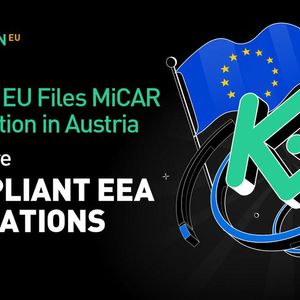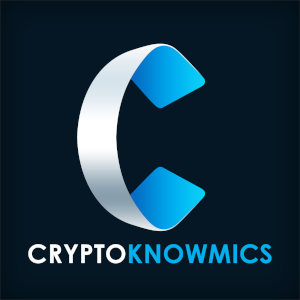In the fast-paced world of cryptocurrency and blockchain, decentralization and open access are foundational principles. Now, this ethos is making waves in the realm of Artificial Intelligence, particularly in Europe. Imagine a future where AI models are not controlled by a handful of tech giants, but are openly accessible, customizable, and built collaboratively. This vision is becoming a reality as Europe champions open source LLMs (Large Language Models) to bolster its digital sovereignty, a move that resonates deeply with the crypto community’s values of transparency and distributed power. Why is Europe Betting Big on Open Source LLMs for Digital Sovereignty? Europe’s push for digital sovereignty isn’t just a tech trend; it’s a strategic imperative. Think of it as securing the digital infrastructure much like nations safeguard their borders. In the age of AI, where data is the new oil, controlling the tools and technologies that process this data is paramount. Here’s why Europe is prioritizing this: Data Security and Control: With growing concerns about data privacy and the dominance of non-European tech companies, Europe wants to ensure that its data, especially sensitive information, is processed and stored within its borders, under its regulations. Economic Growth and Innovation: By fostering a local AI ecosystem based on open source LLMs , Europe aims to stimulate innovation, create jobs, and reduce reliance on foreign technologies. This creates opportunities for European businesses to compete on a global scale. Cultural and Linguistic Diversity: Europe is a continent rich in languages and cultures. European AI strategy emphasizes the need for LLMs that understand and cater to this diversity, ensuring AI is inclusive and representative of all European citizens. Strategic Autonomy: Relying heavily on proprietary AI models from outside Europe could create vulnerabilities. Digital sovereignty through open source LLMs provides Europe with greater control over its technological destiny, aligning with the broader goal of strategic autonomy. Enter OpenEuroLLM: Europe’s Ambitious AI Project The latest initiative making headlines is OpenEuroLLM, a collaborative project involving around 20 organizations. Co-led by experts like Jan Hajič and Peter Sarlin, OpenEuroLLM is not just another AI project; it’s a statement of intent. It aims to develop a series of truly open source LLMs covering all EU languages, including those of countries aspiring to join the EU. This forward-thinking approach ensures that the models are future-proof and inclusive. Key Highlights of OpenEuroLLM: Broad Collaboration: Bringing together academic institutions, research centers, and corporations from across Europe, fostering a diverse and robust ecosystem. Multilingual Focus: Developing models proficient in all 24 official EU languages and beyond, addressing the unique linguistic landscape of Europe. Open Source Commitment: Striving for truly open models, datasets, and weights, promoting transparency and accessibility – a stark contrast to the proprietary models dominating the market. EuroHPC Support: Leveraging the power of European supercomputing centers to provide the immense computational resources needed for training these massive models. Is the Budget Enough for Europe’s AI Aspirations? The project’s budget for model development is around €37.4 million, with €20 million from the EU’s Digital Europe Programme. While this might seem like a “drop in the ocean” compared to Big Tech’s AI investments, it’s crucial to consider the broader context. The OpenEuroLLM Project taps into the extensive resources of the EuroHPC project, which has a budget of approximately €7 billion. This includes access to state-of-the-art supercomputing facilities, significantly reducing the financial burden on the model development itself. Budget Breakdown Considerations: EuroHPC Infrastructure: Access to supercomputers drastically cuts down compute costs, a major expense in AI model training. Focus on Models, Not Products: OpenEuroLLM is focused on creating foundational models, not consumer-facing products like chatbots. This targeted approach optimizes resource allocation. Existing Expertise: Building upon the groundwork of the HPLT project, OpenEuroLLM benefits from pre-existing datasets, tools, and experienced personnel, saving time and resources. Challenges and Criticisms: Can Europe’s Collaborative Approach Compete? Despite the ambitious goals, the European AI strategy and projects like OpenEuroLLM face skepticism. One major concern is the sheer number of participating organizations. Anastasia Stasenko from Pleias points out that smaller, focused teams like Mistral AI and LightOn have been Europe’s AI success stories, questioning whether a large consortium can achieve the same agility and focus. Another challenge is the existence of a similar project, EuroLLM, leading to potential duplication of effort and confusion. Key Challenges: Consortium Complexity: Managing a large, diverse group of organizations can be complex, potentially slowing down decision-making and execution. Collaboration and Coordination: Ensuring effective collaboration and avoiding redundancy among the numerous partners is crucial for success. Competition from Existing Projects: The existence of EuroLLM raises questions about resource allocation and the need for clear differentiation and collaboration between projects. Attracting Top Talent: Europe needs to attract and retain top AI talent to compete globally, and open source projects need to be appealing to leading researchers and engineers. Open Source Definition: Navigating the Nuances in AI The concept of “open source” in AI is not as straightforward as in traditional software. While the goal of OpenEuroLLM project is to be “truly open,” there are complexities. The Open Source Initiative (OSI) has a definition for open source AI, but it doesn’t mandate open training data, acknowledging that AI models are often trained on proprietary or restricted data. OpenEuroLLM will likely have to navigate these complexities, potentially keeping some training data restricted for compliance with regulations like the EU AI Act, while striving for maximum transparency. Open Source AI Considerations: Data Availability: Balancing the desire for fully open models with the realities of data licensing and copyright restrictions. Transparency vs. Compliance: Meeting the “openness” ideal while adhering to regulations like the EU AI Act, which may require data audits and restrictions. Community Building: Fostering a vibrant community around these open source LLMs to ensure their long-term development and adoption. Looking Ahead: The Promise of Sovereign AI for Europe Despite the challenges, the European AI strategy and initiatives like OpenEuroLLM represent a powerful and necessary step towards digital sovereignty . By building its own foundation models, Europe is not just aiming to catch up with global AI leaders; it’s forging its own path, one that prioritizes openness, inclusivity, and control. If successful, OpenEuroLLM will provide European businesses and researchers with a crucial AI infrastructure, fostering innovation and reducing dependence on external proprietary technologies. This move towards AI model development within Europe could be transformative, mirroring the impact of open source software on the broader tech industry. To learn more about the latest European AI Strategy trends, explore our article on key developments shaping AI features and institutional adoption.















